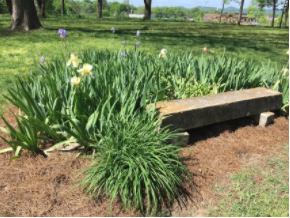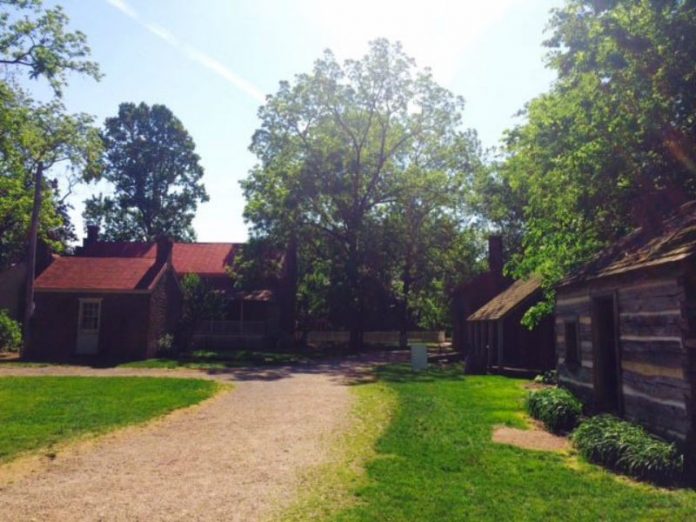In 1830, Fountain Branch Carter built a one-and-a-half story brick house just south of downtown Franklin for his family. At the time he was a successful business man in town. The construction of the home presented an opportunity for him to pursue farming. In the next 20 years the, Carter farm grew from 19 acres to 288. The addition of a cotton gin to the farm operations significantly increased the production, therefore the value of the farm. Things changed on November 30, 1864, with the Battle of Franklin taking place partially on this property. Following the war, the Carter family unsuccessfully attempted to rebuild the farm to the profitability previously enjoyed. In 1896 one of the sons sold the land.
Fast forward to 1951 when the State of Tennessee purchased the Carter House and opened it to the public in 1953 as a National Historic Landmark. Today it is managed, along with the Carnton Plantation, by The Battle of Franklin Trust (BOFT). The Trust is dedicated to preserve the legacy of both families who lived on each property and all the Americans who fought in this battle.
The Williamson County Master Gardeners Association (WCMGA) became involved in the Carter House property around 2004. Because of the size of the grounds, although technically one project, responsibilities were divided into two components – the Carter House Grounds (including the Kitchen Herb Garden) and Carter House Heirloom Orchard & Vegetable Garden. The former is highlighted in this article.
 Connie Chorba and Susan Pavlos were interns in WCMGA in 2005. To fulfill the required volunteer hours they began work on the property. Their efforts were centered on the Kitchen Herb Garden, the Iris beds around the house, the Shade Garden, the various perennial and annual gardens, the shrubs, and each of the gardens surrounding the visitor’s center entrance.
Connie Chorba and Susan Pavlos were interns in WCMGA in 2005. To fulfill the required volunteer hours they began work on the property. Their efforts were centered on the Kitchen Herb Garden, the Iris beds around the house, the Shade Garden, the various perennial and annual gardens, the shrubs, and each of the gardens surrounding the visitor’s center entrance.
Their initial focus of planting annuals and cleaning up the beds was to spruce things up, and to increase the “curb appeal” of the property. Led by the BOFT the effort changed to return the property to what it was like when the Carter family lived on the property. Significant research has been completed and continues to insure an accurate reflection of life on the property. Subtle changes were made at first such as removing the plantings near the foundation. In the mid 1800’s owners of grand structures like the Carter House displayed great pride in their homes. They did not want foundation plants obstructing their view. The return to an authentic representation took a few years, but the vision of the BOFT has been realized through community and government support as well as the continued backing of the WCMGA and the MG volunteers that work on the property. When designing the gardens and selecting plants, decisions are made for long term implementation because as a designated archeological site, excavation, i.e. continual removal of planting materials, is not an option.
 As in Carter’s time the Kitchen Herb Garden is located near a separate building on the property that was the kitchen. Traditional herbs such as lemon balm, basil, chives, garlic, pineapple sage, mint, fennel, dill, rosemary, thyme, and parsley are maintained. The two plants that are included that may not have been planted in the mid 1800’s are cilantro and stevia, an all-natural sweetener.
As in Carter’s time the Kitchen Herb Garden is located near a separate building on the property that was the kitchen. Traditional herbs such as lemon balm, basil, chives, garlic, pineapple sage, mint, fennel, dill, rosemary, thyme, and parsley are maintained. The two plants that are included that may not have been planted in the mid 1800’s are cilantro and stevia, an all-natural sweetener.
The MG volunteers work every Tuesday morning (and additional hours as necessary) from April to October. Some of the original MG volunteers have remained intact for over 10 years logging in at least 80 hours per year per volunteer. According to Pavlos, when working on the property, there is a sense of reverence. You look up and see the bullet holes on the buildings and cannot imagine what it was like during that battle. Working on this hallowed ground is a labor of love mixed in with some intimate socialization and respectable outside activity.
Carter House is very well visited. In addition to the variety of school field trips from around the area, numerous individuals from all over the country travel to Franklin TN. There is significant interest in Civil War sites and when guests arrive they want to see it realistically portrayed, correctly reflecting the time period. BOFT (with WCMGA financial support and dedicated MG volunteers) continues to improve the property to exceed the expectations of the over 40,000 annual visitors.
For additional information regarding this project or other Williamson County Master Gardening activities, please contact WCMGA.net.



















